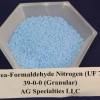 In response to the Federal Clean Water Act of 1972 and the Florida Restoration Act of 1999, a series of best management practices (BMPs) was implemented to improve surface and ground water quality. BMPs are cultural practices that, when implemented as a plan, help reduce the environmental impact of production while maintaining yield and quality. One of these BMPs includes the use of controlled-release fertilizer, which is an enhanced-efficiency fertilizer. This publication describes the common enhanced-efficiency fertilizers and the factors affecting their use in Florida vegetable production. This 9-page fact sheet was written by Luther Carson and Monica Ozores-Hampton, and published by the UF Department of Horticultural Sciences, October 2014.
In response to the Federal Clean Water Act of 1972 and the Florida Restoration Act of 1999, a series of best management practices (BMPs) was implemented to improve surface and ground water quality. BMPs are cultural practices that, when implemented as a plan, help reduce the environmental impact of production while maintaining yield and quality. One of these BMPs includes the use of controlled-release fertilizer, which is an enhanced-efficiency fertilizer. This publication describes the common enhanced-efficiency fertilizers and the factors affecting their use in Florida vegetable production. This 9-page fact sheet was written by Luther Carson and Monica Ozores-Hampton, and published by the UF Department of Horticultural Sciences, October 2014.
http://edis.ifas.ufl.edu/hs1247
Tag: Horticultural Sciences Department
A Farm to School Procurement Calculator for Specialty Crop Producers and School Food Service Staff
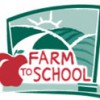 Florida Farm to School programs are designed to connect producers with schools. But school food service staff make their purchasing decisions in terms of servings and producers pack their products by weight. General calculators and guides designed for national Farm to School programs don’t address Florida’s diverse production of fresh fruits and vegetables. This procurement calculator and guide for Florida Farm to School programs was written by Jonathan A. Watson, Danielle Treadwell, Anna Prizzia, and Kelli Brew, and published by the UF Department of Horticultural Sciences, September 2014.
Florida Farm to School programs are designed to connect producers with schools. But school food service staff make their purchasing decisions in terms of servings and producers pack their products by weight. General calculators and guides designed for national Farm to School programs don’t address Florida’s diverse production of fresh fruits and vegetables. This procurement calculator and guide for Florida Farm to School programs was written by Jonathan A. Watson, Danielle Treadwell, Anna Prizzia, and Kelli Brew, and published by the UF Department of Horticultural Sciences, September 2014.
http://edis.ifas.ufl.edu/hs1250
Jalapeño and Other Hot Pepper Varieties for Florida
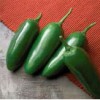
The jalapeño is derived from the Capsicum genus of the family Solanaceae. Jalapeños are members of a diverse group, which also include ancho poblano, cayenne, serrano, Anaheim, banana, Asian, habanero, and Hungarian wax peppers. Hot peppers are classified by their heat and shape. The heat of the pepper comes from the chemical compound capsaicin, which is measured by the Scoville scale. This 8-page fact sheet is a guide of jalapeño and other hot pepper varieties used in Florida was written by Monica Ozores-Hampton and Gene McAvoy, and published by the UF Department of Horticultural Sciences, October 2014.
http://edis.ifas.ufl.edu/hs1241
Growth Stages and Tuber Development of FL1867 Potato under Full and Reduced Irrigation Scheduling
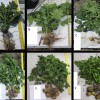 The potato cultivar ‘Frito Lay 1867’ (‘FL 1867’) is a popular chipping variety grown across Florida and the southern United States. Knowledge of the timing and duration of the tuber initiation and tuber bulking stages for ‘FL 1867’ is critical for timing fertilizer and irrigation applications. So to evaluate the start and length of the tuber initiation and tuber bulking stages under Florida growing conditions, ‘FL 1867’ plants were dug up and photographed on a weekly basis from a commercial field near Live Oak, FL in 2012. This 3-page fact sheet was written by Seth A. Byrd, Diane L. Rowland, and Lincoln Zotarelli, and published by the UF Department of Agronomy, September 2014.
The potato cultivar ‘Frito Lay 1867’ (‘FL 1867’) is a popular chipping variety grown across Florida and the southern United States. Knowledge of the timing and duration of the tuber initiation and tuber bulking stages for ‘FL 1867’ is critical for timing fertilizer and irrigation applications. So to evaluate the start and length of the tuber initiation and tuber bulking stages under Florida growing conditions, ‘FL 1867’ plants were dug up and photographed on a weekly basis from a commercial field near Live Oak, FL in 2012. This 3-page fact sheet was written by Seth A. Byrd, Diane L. Rowland, and Lincoln Zotarelli, and published by the UF Department of Agronomy, September 2014.
http://edis.ifas.ufl.edu/ag388
University of Florida Potato Variety Trial Program: 'Elkton' Commercial Evaluation
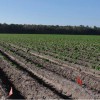 The ‘Elkton’ chipping potato variety was tested on a commercial scale at two growers’ farms in Florida during the 2011 season. The average yield of ‘Elkton’ in the commercial trials ranged between 295 and 324 cwt/ac, an average of 11 percent higher than that of the standard ‘Atlantic,’ and comparable to the yield range obtained in 19 trials conducted over a nine-year period by the University of Florida. This 4-page fact sheet was written by Lincoln Zotarelli, Douglas Gergela, and Dana Fourman, and published by the UF Department of Horticultural Sciences, October 2014.
The ‘Elkton’ chipping potato variety was tested on a commercial scale at two growers’ farms in Florida during the 2011 season. The average yield of ‘Elkton’ in the commercial trials ranged between 295 and 324 cwt/ac, an average of 11 percent higher than that of the standard ‘Atlantic,’ and comparable to the yield range obtained in 19 trials conducted over a nine-year period by the University of Florida. This 4-page fact sheet was written by Lincoln Zotarelli, Douglas Gergela, and Dana Fourman, and published by the UF Department of Horticultural Sciences, October 2014.
http://edis.ifas.ufl.edu/hs1253
A Practical Guide for Aquaponics as an Alternative Enterprise
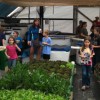 Aquaponics is an intensive sustainable agricultural production system that connects hydroponic and aquaculture systems to produce multiple cash crops with reduced water and fertilizer inputs. It is highly suited for small farm producers targeting local markets and agritourism opportunities. This 10-page fact sheet was written by Richard Tyson and Eric Simonne, and published by the UF Department of Horticultural Sciences, September 2014.
Aquaponics is an intensive sustainable agricultural production system that connects hydroponic and aquaculture systems to produce multiple cash crops with reduced water and fertilizer inputs. It is highly suited for small farm producers targeting local markets and agritourism opportunities. This 10-page fact sheet was written by Richard Tyson and Eric Simonne, and published by the UF Department of Horticultural Sciences, September 2014.
http://edis.ifas.ufl.edu/hs1252
Conventional and Specialty Eggplant Varieties in Florida
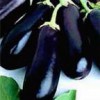 Eggplants are members of the nightshade family Solanaceae. Cultural practices employed in eggplant production are similar to tomatoes and peppers. In south Florida, where winters are mild and freezes are infrequent, eggplants are planted from August to March. This 5-page fact sheet is a guide to eggplant varieties commonly used in Florida. Written by Monica Ozores-Hampton, and published by the UF Department of Horticultural Sciences, October 2014.
Eggplants are members of the nightshade family Solanaceae. Cultural practices employed in eggplant production are similar to tomatoes and peppers. In south Florida, where winters are mild and freezes are infrequent, eggplants are planted from August to March. This 5-page fact sheet is a guide to eggplant varieties commonly used in Florida. Written by Monica Ozores-Hampton, and published by the UF Department of Horticultural Sciences, October 2014.
http://edis.ifas.ufl.edu/hs1243
Consuming local vegetables from our local growers
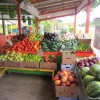 In recent years, consumers increasingly are seeking out locally grown foods, due to concern for freshness, food safety, and the carbon footprint associated with food sourced from distant places. This 5-page fact sheet promotes local vegetable consumption by pointing out some of the advantages, benefits, and business opportunities associated with local vegetable production and consumption. Written by Qingren Wang, Edward A. Evans, Margie Pikarsky, and Teresa Olczyk, and published by the UF Department of Horticultural Sciences, September 2014.
In recent years, consumers increasingly are seeking out locally grown foods, due to concern for freshness, food safety, and the carbon footprint associated with food sourced from distant places. This 5-page fact sheet promotes local vegetable consumption by pointing out some of the advantages, benefits, and business opportunities associated with local vegetable production and consumption. Written by Qingren Wang, Edward A. Evans, Margie Pikarsky, and Teresa Olczyk, and published by the UF Department of Horticultural Sciences, September 2014.
http://edis.ifas.ufl.edu/hs1251
Peach Scab
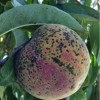 Peach scab is a disease caused by the fungus Cladosporium carpophilum. The pathogen can infect other fruits and nuts within the Prunus species, like almonds, apricots, nectarines, and plums. Peach scab is common during periods of humid weather because rain splashes the conidia (asexual spores) from the fungus between leaves, twigs, and fruit in the tree canopy, which spreads the disease. This 6-page fact sheet was written by Daniel Mancero-Castillo, Mercy Olmstead, and Phillip Harmon, and published by the UF Department of Horticultural Sciences, July 2014.
Peach scab is a disease caused by the fungus Cladosporium carpophilum. The pathogen can infect other fruits and nuts within the Prunus species, like almonds, apricots, nectarines, and plums. Peach scab is common during periods of humid weather because rain splashes the conidia (asexual spores) from the fungus between leaves, twigs, and fruit in the tree canopy, which spreads the disease. This 6-page fact sheet was written by Daniel Mancero-Castillo, Mercy Olmstead, and Phillip Harmon, and published by the UF Department of Horticultural Sciences, July 2014.
http://edis.ifas.ufl.edu/hs1249
Heirloom Eggplant Varieties in Florida
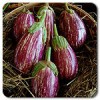 Eggplant has a colorful heritage. It was first domesticated more than 4,000 years ago. Ancient Chinese crossbred varieties with different shapes and colors. It migrated to Egypt during the 9th to 12th centuries AD, the Moors introduced eggplant to the Spanish, who took the eggplant to South America around 1650, and in 1806, Thomas Jefferson introduced the eggplant to the United States after receiving the fruit from a friend in France. As opposed to the modern-day hybrid cultivars, heirlooms are old cultivars generated by handing down seeds from generation to generation. This 6-page fact sheet is a guide to heirloom eggplant varieties used in Florida. Written by Monica Ozores-Hampton, and published by the UF Department of Horticultural Sciences, November 2014.
Eggplant has a colorful heritage. It was first domesticated more than 4,000 years ago. Ancient Chinese crossbred varieties with different shapes and colors. It migrated to Egypt during the 9th to 12th centuries AD, the Moors introduced eggplant to the Spanish, who took the eggplant to South America around 1650, and in 1806, Thomas Jefferson introduced the eggplant to the United States after receiving the fruit from a friend in France. As opposed to the modern-day hybrid cultivars, heirlooms are old cultivars generated by handing down seeds from generation to generation. This 6-page fact sheet is a guide to heirloom eggplant varieties used in Florida. Written by Monica Ozores-Hampton, and published by the UF Department of Horticultural Sciences, November 2014.
http://edis.ifas.ufl.edu/hs1242
Characterization of the Florida Fresh Fruit and Vegetable Industry Using Hydroponic Systems or Protected Agriculture Structures
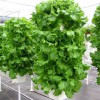 UF/IFAS Extension faculty, allied industry representatives, and growers determined the need to assess the size and scope of the protected agriculture industry in 2013 by surveying growers in Florida. The primary focus was to document the types of protected agriculture structures, crops, and growing systems being used. In addition, secondary information on location of operations, pest concerns, expected expansion, etc. was collected on many operations. The results documented a significant expansion of the industry in terms of both size and scope. This 8-page fact sheet was written by Robert C. Hochmuth and Dilcia E. Toro, and published by the UF Department of Horticultural Sciences, August 2014.
UF/IFAS Extension faculty, allied industry representatives, and growers determined the need to assess the size and scope of the protected agriculture industry in 2013 by surveying growers in Florida. The primary focus was to document the types of protected agriculture structures, crops, and growing systems being used. In addition, secondary information on location of operations, pest concerns, expected expansion, etc. was collected on many operations. The results documented a significant expansion of the industry in terms of both size and scope. This 8-page fact sheet was written by Robert C. Hochmuth and Dilcia E. Toro, and published by the UF Department of Horticultural Sciences, August 2014.
http://edis.ifas.ufl.edu/hs1240
Weed Management Principles in Commercial Vegetable Production
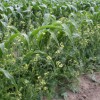 Weeds compete with vegetable crops for light, water, and nutrients. This competition decreases plant vigor, yield, and crop quality. They interfere with hand harvest and can complicate or prevent machine harvest. Weeds also serve as alternative hosts to diseases, viruses, and nematodes. A successful weed management program will incorporate multiple control practices with preventative, cultural, biological, mechanical, and chemical methods.
Weeds compete with vegetable crops for light, water, and nutrients. This competition decreases plant vigor, yield, and crop quality. They interfere with hand harvest and can complicate or prevent machine harvest. Weeds also serve as alternative hosts to diseases, viruses, and nematodes. A successful weed management program will incorporate multiple control practices with preventative, cultural, biological, mechanical, and chemical methods.
This 6-page fact sheet was written by Peter Dittmar and Nathan Boyd, and published by the UF Department of Horticultural Sciences, July 2014.
http://edis.ifas.ufl.edu/cv113
Biology and Management of Common Purslane in Fruiting Vegetables, Cucurbits, and Strawberries
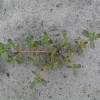 Purslane occurs throughout the year in Florida. It produces thousands of seeds per plant, which germinate readily, but can also persist in the soil for up to 15 years. Vegetative shoot fragments can survive on the soil surface for extended periods of time, then re-root when exposed to moisture and can even flower and produce seeds after they have been pulled from the soil. This characteristic enables purslane to persist and spread following cultivation. This 4-page fact sheet was written by Nathan S. Boyd, Andrew W. MacRae, Rick Kelly, and Ixchel M. Hernandez, and published by the UF Department of Horticultural Sciences, July 2014.
Purslane occurs throughout the year in Florida. It produces thousands of seeds per plant, which germinate readily, but can also persist in the soil for up to 15 years. Vegetative shoot fragments can survive on the soil surface for extended periods of time, then re-root when exposed to moisture and can even flower and produce seeds after they have been pulled from the soil. This characteristic enables purslane to persist and spread following cultivation. This 4-page fact sheet was written by Nathan S. Boyd, Andrew W. MacRae, Rick Kelly, and Ixchel M. Hernandez, and published by the UF Department of Horticultural Sciences, July 2014.
http://edis.ifas.ufl.edu/hs1238
Soil pH Management for Optimum Commercial Fruit Production in Florida
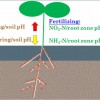 Soil pH is one of the most important soil chemical properties and affects nutrient bioavailability and microbial activity. The purpose of this article is to provide an overview for faculty, crop consultants, crop advisors, fruit growers, and students who are interested in fruit production. The crop response to soil pH varies due to crop genetic diversity. Soil pH determines nutrient bioavailability and hence fruit growth, yield, and quality. This 6-page fact sheet was written by Guodong Liu, Rao Mylavarapu, Ed Hanlon, and Wei Chieh Lee, and published by the UF Department of Horticultural Sciences, April 2014.
Soil pH is one of the most important soil chemical properties and affects nutrient bioavailability and microbial activity. The purpose of this article is to provide an overview for faculty, crop consultants, crop advisors, fruit growers, and students who are interested in fruit production. The crop response to soil pH varies due to crop genetic diversity. Soil pH determines nutrient bioavailability and hence fruit growth, yield, and quality. This 6-page fact sheet was written by Guodong Liu, Rao Mylavarapu, Ed Hanlon, and Wei Chieh Lee, and published by the UF Department of Horticultural Sciences, April 2014.
http://edis.ifas.ufl.edu/hs1234
Bush Snapbean Production in Miami-Dade County, Florida
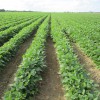 Miami-Dade County is the primary production region for fresh-market bush snapbeans with 57% or 18,696 acres of the Florida bean acreage. Production costs vary from $16.53 to $21.87 per 30 lb. bushel or $4,046 to $4,711 per acre. Acceptable yields range from 185 to over 300 bushels per acre. Snapbeans produced in Miami-Dade County are sold nationwide for the fresh market starting just before Thanksgiving and continuing through the winter and spring months. This 9-page fact sheet was written by S. Zhang, D. Seal, M. Ozores-Hampton, M. Lamberts, Y. Li, W. Klassen, and T. Olczyk, specifically for growers in Miami-Dade County as a supplement to The Vegetable Production Handbook for Florida (SP170). Published by the UF Department of Horticultural Sciences, July 2014.
Miami-Dade County is the primary production region for fresh-market bush snapbeans with 57% or 18,696 acres of the Florida bean acreage. Production costs vary from $16.53 to $21.87 per 30 lb. bushel or $4,046 to $4,711 per acre. Acceptable yields range from 185 to over 300 bushels per acre. Snapbeans produced in Miami-Dade County are sold nationwide for the fresh market starting just before Thanksgiving and continuing through the winter and spring months. This 9-page fact sheet was written by S. Zhang, D. Seal, M. Ozores-Hampton, M. Lamberts, Y. Li, W. Klassen, and T. Olczyk, specifically for growers in Miami-Dade County as a supplement to The Vegetable Production Handbook for Florida (SP170). Published by the UF Department of Horticultural Sciences, July 2014.
http://edis.ifas.ufl.edu/tr005
Southern Highbush Blueberry Cultivars from the University of Florida
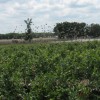 Many improved southern highbush cultivars have been developed by the University of Florida breeding program since the initial releases of ‘Sharpblue’, ‘Flordablue’, and ‘Avonblue’ in the mid-1970s. Today there are more blueberry cultivar choices available for Florida growers than ever before, but in every case, cultivar selection involves weighing the advantages and disadvantages of a cultivar relative to the grower’s needs. Unfortunately, there are no perfect cultivars suited for every location and management system. This 10-page fact sheet categorizes southern highbush cultivars into four groups: major cultivars, secondary cultivars, new options, and historical cultivars. Proper cultivar selection is critical to a successful blueberry enterprise, and growers should seek information from multiple sources, including their local county Extension office. Written by J.G. Williamson, J.W. Olmstead, G.K. England, and P.M. Lyrene, and published by the UF Department of Horticultural Sciences, April 2014.
Many improved southern highbush cultivars have been developed by the University of Florida breeding program since the initial releases of ‘Sharpblue’, ‘Flordablue’, and ‘Avonblue’ in the mid-1970s. Today there are more blueberry cultivar choices available for Florida growers than ever before, but in every case, cultivar selection involves weighing the advantages and disadvantages of a cultivar relative to the grower’s needs. Unfortunately, there are no perfect cultivars suited for every location and management system. This 10-page fact sheet categorizes southern highbush cultivars into four groups: major cultivars, secondary cultivars, new options, and historical cultivars. Proper cultivar selection is critical to a successful blueberry enterprise, and growers should seek information from multiple sources, including their local county Extension office. Written by J.G. Williamson, J.W. Olmstead, G.K. England, and P.M. Lyrene, and published by the UF Department of Horticultural Sciences, April 2014.
http://edis.ifas.ufl.edu/hs1245
Heirloom Hot Pepper Varieties for Florida
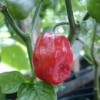 Here is a guide of the popular pepper varieties used in Florida. The popularity was assessed from a survey among seed suppliers, which include Baker Creek Heirloom Seeds, Burpee, High Mowing Seeds, Southern Exposure Seed Exchange, Tomato Grower Supply Company, Seeds of Change, Territorial Seed Company, and My Patriot Supply. When organic seeds were available, the USDA logo was inserted. The relative Scoville rating, which measures a pepper’s pungency, was also included when it was available. This 15-page fact sheet was written by Monica Ozores-Hampton, and published by the UF Department of Horticultural Sciences, November 2014.
Here is a guide of the popular pepper varieties used in Florida. The popularity was assessed from a survey among seed suppliers, which include Baker Creek Heirloom Seeds, Burpee, High Mowing Seeds, Southern Exposure Seed Exchange, Tomato Grower Supply Company, Seeds of Change, Territorial Seed Company, and My Patriot Supply. When organic seeds were available, the USDA logo was inserted. The relative Scoville rating, which measures a pepper’s pungency, was also included when it was available. This 15-page fact sheet was written by Monica Ozores-Hampton, and published by the UF Department of Horticultural Sciences, November 2014.
http://edis.ifas.ufl.edu/hs1244
2013 Sweet Corn Variety Performance Trial, Jay, Florida
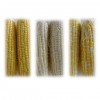 This 5-page fact sheet summarizes the 2013 sweet corn variety trial at the UF West Florida Research and Education Center Jay Research farm in Jay, Florida. It shows the performance of fifteen commercial and experimental Sh2 (supersweet) sweet corn varieties. This data only represents one year and one location; test results should be considered over several years and locations before final conclusions are valid. Written by Darcy Telenko, Libby Johnson, and William Wendt, and published by the UF Department of Horticultural Sciences, November 2014.
This 5-page fact sheet summarizes the 2013 sweet corn variety trial at the UF West Florida Research and Education Center Jay Research farm in Jay, Florida. It shows the performance of fifteen commercial and experimental Sh2 (supersweet) sweet corn varieties. This data only represents one year and one location; test results should be considered over several years and locations before final conclusions are valid. Written by Darcy Telenko, Libby Johnson, and William Wendt, and published by the UF Department of Horticultural Sciences, November 2014.
http://edis.ifas.ufl.edu/hs1236
Introduction to Organic Crop Production
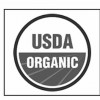 Organic farming can generally be described as a method of production that utilizes non-synthetic inputs and emphasizes biological and ecological process to improve soil quality, manage soil fertility, and optimize pest management. This 16-page fact sheet is written for commercial producers who are transitioning to or beginning organic production. Written by D.D. Treadwell, and published by the UF Department of Horticultural Sciences, April 2014.
Organic farming can generally be described as a method of production that utilizes non-synthetic inputs and emphasizes biological and ecological process to improve soil quality, manage soil fertility, and optimize pest management. This 16-page fact sheet is written for commercial producers who are transitioning to or beginning organic production. Written by D.D. Treadwell, and published by the UF Department of Horticultural Sciences, April 2014.
http://edis.ifas.ufl.edu/cv118
University of Florida Potato Variety Spotlight: 'Elkton'
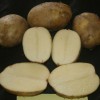 'Elkton' is a white-flesh potato variety suitable for chipping directly from the field. 'Elkton' was selected from the USDA-ARS breeding program in Beltsville, Maryland, by Dr. Haynes in 1997. In 2003, seed of 'Elkton' was made available for field evaluation under Florida growing conditions. In 19 trials conducted between 2003 and 2012, 'Elkton' yielded 111% in comparison with 'Atlantic'. In these trials, 'Elkton' demonstrated resistance to internal heat necrosis and hollow heart, which are common tuber physiological disorders under high-temperature growing conditions. This 3-page fact sheet was written by Lincoln Zotarelli, Douglas Gergela, Kathleen Haynes, and Dana Fourman, and published by the UF Department of Horticultural Sciences, April 2014.
'Elkton' is a white-flesh potato variety suitable for chipping directly from the field. 'Elkton' was selected from the USDA-ARS breeding program in Beltsville, Maryland, by Dr. Haynes in 1997. In 2003, seed of 'Elkton' was made available for field evaluation under Florida growing conditions. In 19 trials conducted between 2003 and 2012, 'Elkton' yielded 111% in comparison with 'Atlantic'. In these trials, 'Elkton' demonstrated resistance to internal heat necrosis and hollow heart, which are common tuber physiological disorders under high-temperature growing conditions. This 3-page fact sheet was written by Lincoln Zotarelli, Douglas Gergela, Kathleen Haynes, and Dana Fourman, and published by the UF Department of Horticultural Sciences, April 2014.
http://edis.ifas.ufl.edu/hs1237